I came up with a solution to this. In order to solve this efficiently, some sort of spatial data structure is needed in order to query which polygons are overlapped by a given rectangular area. I used a Quadtree. It's also necessary for the polygon data structure being used to be able to distinguish between internal and external edges. An edge is internal if it is common to two polygons.
The steps are as follows (assuming a coordinate system with the origin in the top-left corner):
- Insert all polygons into whatever spatial data structure you're using.
- Iterate over all polygons and build a list of all of the Y values upon
which vertices occur. This has the effect of conceptually dividing up
the scene into horizontal strips:

- Iterate over the pairs of Y values from top to bottom. For each
pair
(y0, y1) of Y values, declare a rectangular area a with
the the top left corner (0, y0) and bottom right corner
(width, y1). Determine the set of polygons S that are
overlapped by a by querying the spatial data structure. For
each polygon p in S, determine the set of edges E of p
that are overlapped by a. For best results, ignore any edge in
E with a normal that points directly up or down. For each
edge e in E, it's then necessary to determine the pair of
points at which e intersects the top and bottom edges of a.
This is achieved with a simple line intersection test,
treating the top and bottom edges of a as simple horizontal
line segments. Join the intersection points to create a set of
new line segments, shown in red:

- Create vertical line segments
L0 = (0, y0) → (0, y1) and
L1 = (width, y0) → (width, y1). Working from left to right,
gather any line segments created in the preceding step into pairs,
ignoring any line segments that were created from internal edges.
If there were no intersecting external edges, then the only two
edges will be L0 and L1. In this example strip, only four
edges remain:

- Join the vertices in the remaining pairs of edges to create
polygons:

Repeating the above process for each horizontal strip achieves
the desired result. Assuming a set of convex, non-overlapping
polygons as input, the created polygons are guaranteed to be
either triangles or quadrilaterals. If a horizontal strip contains
no edges, the algorithm will create a single rectangle. If no
polygons exist in the scene, the algorithm will create a single
rectangle covering the whole scene.





